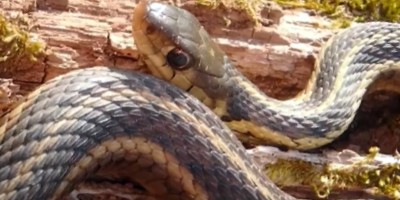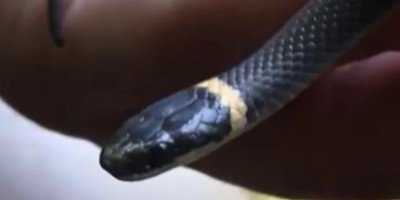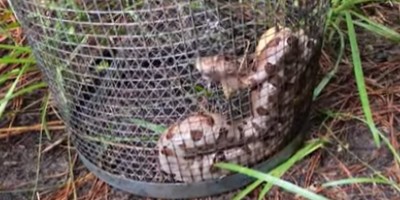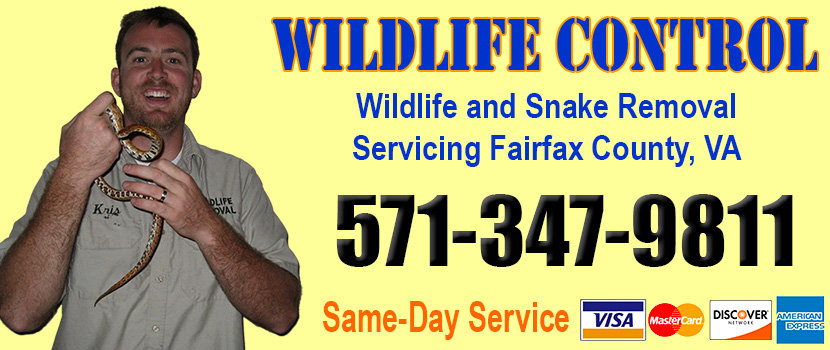
Welcome to fairfaxcountysnakes.com! I am David, a snake enthusiast living in Fairfax County, VA. Many people don't know that Fairfax County is in fact full of snakes! You just need to know where to find them - they can often be shy and elusive. Some Virginia snake species are more common outside of the city limits, in different parts of Fairfax County VA, but many types of snakes are indeed common in the more urban parts of Fairfax County. This guide is meant to help educate you about the beautiful snakes of Fairfax County, and to help you identify the most common snakes of Fairfax County, as well as the venomous snakes of Fairfax County that you should learn to recognize and avoid. If you want more detail, click here for my complete list of ALL snake species in Fairfax County. Remember the following:
- Most snakes of Fairfax County are harmless and don't want to encounter you
- Venomous snakes exist but are uncommon in Fairfax County, Virginia
- Snakes eat rats and mice and are a valuable part of the Virginia ecosystem
- Never kill a snake - if you leave a snake alone, it will leave you alone.
Common Snake Species in Fairfax County
 Eastern Rat Snake:
The eastern rat snake, also known as the black rat snake, is a large nonvenomous snake found in many parts of the United States. These snakes are quite large, and adults can be anywhere between three to seven feet long. You can identify the eastern rat snake by its black body and white chin and belly. You’ll often find these snakes in prairies and fields. They’re also quite common in the suburbs and near farms. That’s because farmland tends to have plenty of rats that will attract these snakes. These snakes have a varied diet, so rats aren’t the only thing they eat. They’re also known to go after birds and amphibians as well.
Eastern Rat Snake:
The eastern rat snake, also known as the black rat snake, is a large nonvenomous snake found in many parts of the United States. These snakes are quite large, and adults can be anywhere between three to seven feet long. You can identify the eastern rat snake by its black body and white chin and belly. You’ll often find these snakes in prairies and fields. They’re also quite common in the suburbs and near farms. That’s because farmland tends to have plenty of rats that will attract these snakes. These snakes have a varied diet, so rats aren’t the only thing they eat. They’re also known to go after birds and amphibians as well.
 Eastern Garter Snake:
The eastern garter snake is one of the most common snakes in North America, and they’re pretty harmless. This species’ adults are typically three feet in length. Yet their young are only five to nine inches in size. These snakes come in a wide variety of colors, yet they all share a basic skin pattern. They all have a dark body with three yellow stripes running down their backs. Their chins and bellies are also yellow. Garter snakes can be found just about everywhere. They’re known to inhabit rocky areas, wetlands, forests, or plains. These snakes also frequently visit people’s gardens. While in the garden, the snakes are known to prey on a number of small pests, like worms or mice. Yet they’re also known to go after fish, frogs, and other amphibians.
Eastern Garter Snake:
The eastern garter snake is one of the most common snakes in North America, and they’re pretty harmless. This species’ adults are typically three feet in length. Yet their young are only five to nine inches in size. These snakes come in a wide variety of colors, yet they all share a basic skin pattern. They all have a dark body with three yellow stripes running down their backs. Their chins and bellies are also yellow. Garter snakes can be found just about everywhere. They’re known to inhabit rocky areas, wetlands, forests, or plains. These snakes also frequently visit people’s gardens. While in the garden, the snakes are known to prey on a number of small pests, like worms or mice. Yet they’re also known to go after fish, frogs, and other amphibians.
 Northern Ring-Necked Snake:
The northern ring-necked snake is another fairly common snake. These snakes are very small, rarely exceeding a foot in size. These snakes are also quite slender and thin. The ring-necked snake gets its name from the yellow or orange ring it has around its neck. This provides for a stark contrast to its black or dark brown body. The snake also has a yellow or orange chin and belly. These snakes prefer living out of sight. That’s why they spend most of their lives under rocks, fallen logs, or even underground. Because of its small size, the ring-necked snake has a more limited diet than most other snakes. It mainly preys on small insects, worms, and slugs. Yet its preferred prey is the red-backed salamander.
Northern Ring-Necked Snake:
The northern ring-necked snake is another fairly common snake. These snakes are very small, rarely exceeding a foot in size. These snakes are also quite slender and thin. The ring-necked snake gets its name from the yellow or orange ring it has around its neck. This provides for a stark contrast to its black or dark brown body. The snake also has a yellow or orange chin and belly. These snakes prefer living out of sight. That’s why they spend most of their lives under rocks, fallen logs, or even underground. Because of its small size, the ring-necked snake has a more limited diet than most other snakes. It mainly preys on small insects, worms, and slugs. Yet its preferred prey is the red-backed salamander.
Venomous Snake Species in Fairfax County
 Copperhead:
Copperheads are one of the most common venomous snakes in the United States. These snakes aren’t too large, as they tend to be between two to three feet in size. These snakes tend to have orange, copper, or light brown bodies. Hence why they’re called copperheads. They also have notable hour-glass shaped markings across their bodies. These are typically a darker shade of brown than their bodies. You’ll usually run into a copperhead out in a forest or other woodlands. Yet these snakes won’t shy away from living in a swamp or other areas either. Rodents are a copperhead’s main food source, but these snakes will gladly hunt birds, reptiles, or amphibians. They catch their prey by sinking their fangs into them, and holding on until the venom has killed the animal.
Copperhead:
Copperheads are one of the most common venomous snakes in the United States. These snakes aren’t too large, as they tend to be between two to three feet in size. These snakes tend to have orange, copper, or light brown bodies. Hence why they’re called copperheads. They also have notable hour-glass shaped markings across their bodies. These are typically a darker shade of brown than their bodies. You’ll usually run into a copperhead out in a forest or other woodlands. Yet these snakes won’t shy away from living in a swamp or other areas either. Rodents are a copperhead’s main food source, but these snakes will gladly hunt birds, reptiles, or amphibians. They catch their prey by sinking their fangs into them, and holding on until the venom has killed the animal.
 Timber Rattlesnake:
While the copperhead is the only commonly found venomous snake in Fairfax County, timber rattlesnakes are also spotted on occasion. These snakes are much bigger than copperheads, and they can grow up to six feet in length. Like most rattlesnakes, the timber rattlesnake has a brown or grey colored body. These snakes also have dark bands across their entire bodies. Like most other rattlesnakes, the timber rattlesnake has a rattle that can break off from its body. These snakes tend to inhabit forested areas, where they typically prey on small mammals.
Timber Rattlesnake:
While the copperhead is the only commonly found venomous snake in Fairfax County, timber rattlesnakes are also spotted on occasion. These snakes are much bigger than copperheads, and they can grow up to six feet in length. Like most rattlesnakes, the timber rattlesnake has a brown or grey colored body. These snakes also have dark bands across their entire bodies. Like most other rattlesnakes, the timber rattlesnake has a rattle that can break off from its body. These snakes tend to inhabit forested areas, where they typically prey on small mammals.
If you're unsure, you can email me a photo of the snake at info@fairfaxcountysnakes.com and I will email you back with the snake's species. If you found a snake skin, read my Found a Skin? page, and you can email me a photo of the skin, and I'll identify the snake for you. If you need professional Fairfax County snake removal help, click my Get Help page, or see the below website sponsor I found, who provides that service.
Remember, the term is not poisonous snakes of Fairfax County, it's venomous snakes of Fairfax County. Poison is generally something you eat, and venom is injected into you. That said, dangerous snakes are very rare in Fairfax County. The few venomous snakes of Fairfax County are rarely seen. But they are commonly misidentified, so learn about all the snake species of Fairfax County in order to correctly identify them. These snakes are usually also found in the surrounding towns of Reston, Herndon, Chantilly, Vienna, Springfield, McLean, Centreville, Annandale, Tysons, Lorton, Burke, Merrifield, Great Falls, Fairfax Station, Oakton, Mount Vernon, Clifton, Seven Corners, Bailey's Crossroads, Franconia, Dunn Loring, Fort Hunt, West Springfield, Rose Hill, Hybla Valley, Wolf Trap, Lincolnia, Newington, West Falls Church, Belle Haven, Mantua, Mason Neck, Lake Barcroft, Pimmit Hills, South Run, North Springfield, and the surrounding areas.
Read our article about:
Comprehensive Guide on Snake Venom
fairfaxcountysnakes.com domain and hosting costs made possible by the generous support of this sponsor:
